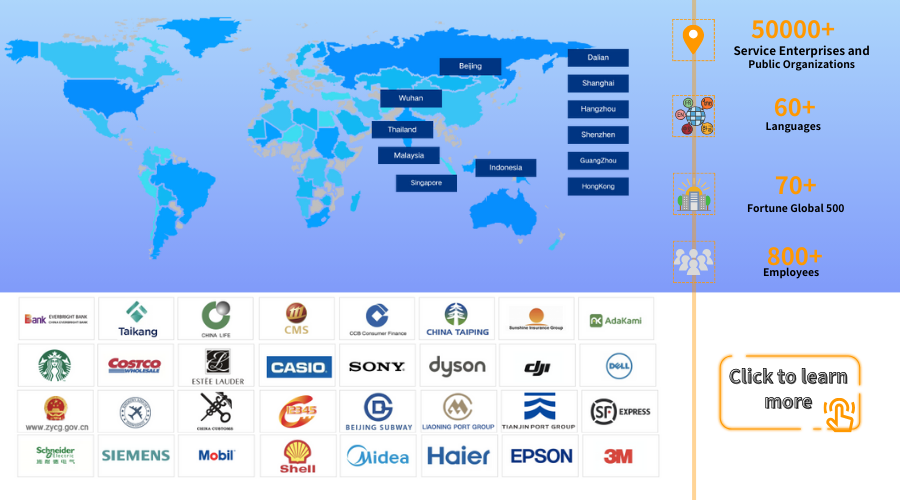Amid the fiercely competitive 3C (Computer, Communication, Consumer Electronics) product market, after-sales service has become a crucial battlefield for enterprises to win consumer trust and enhance brand competitiveness. 3C products are highly technical and used in complex scenarios; the problems consumers encounter during use are often diverse and tricky, placing extremely high demands on the professionalism, response speed, and problem-solving efficiency of after-sales service. However, the traditional
after-sales service work order processing model suffers from cumbersome processes, delayed information transmission, and difficult cross-departmental collaboration, which seriously impair the customer experience and lead to a decline in enterprises’ after-sales reputation. The application of enterprise work order systems has brought a brand-new transformation to the processing of 3C electronics after-sales service work orders, becoming a key tool to boost after-sales reputation.
I. Existing Pain Points in 3C Electronics After-Sales Service Work Order Processing
After-sales issues of 3C products cover multiple aspects such as hardware failures, software system abnormalities, and operational doubts. When consumers encounter problems, they often need to consult through multiple channels—including phone calls, official website customer service, and social media. Information across these channels cannot be effectively integrated, making it difficult for customer service staff to quickly and comprehensively understand the full picture of the problem, which increases the difficulty and time cost of problem diagnosis.
In the traditional work order processing flow, from the customer submitting a problem to work order assignment, processing, and feedback, multiple links and departments are involved, and information is prone to deviation or loss during transmission. For example, a customer service staff member records a customer’s feedback about abnormal screen display of a mobile phone in a work order, but when transferring it to the technical maintenance department, the description is not detailed or accurate enough. As a result, maintenance personnel may need to communicate with the customer again for confirmation, which not only prolongs the problem-solving cycle but also makes the customer feel perfunctory.
Furthermore, after-sales service for 3C products often requires collaboration among multiple departments such as customer service, technical maintenance, and spare parts supply. In practice, however, there is a lack of effective communication and collaboration mechanisms between departments, leading to unsmooth work order circulation and low problem-solving efficiency. When a customer’s laptop has a hardware failure requiring spare parts replacement, the maintenance time may be significantly extended due to insufficient stock in the spare parts supply department or poor information communication between the maintenance and spare parts departments—seriously affecting customer satisfaction.
II. Enterprise Work Order Systems Optimize 3C Electronics After-Sales Work Order Processing
Enterprise work order systems can realize unified access of multi-channel work orders, integrating customer consultations and problem feedback from different channels (such as phone calls, official websites, APPs, and social media) into a single platform. Through intelligent identification and classification, the system automatically assigns work orders to corresponding handlers. Whether a customer reports a mobile phone charging failure via a WeChat official account or consults about tablet system upgrade methods through a customer service hotline, the work order can accurately and quickly enter the corresponding processing flow. This avoids scattered information and duplicate work, improving the initial efficiency of work order processing.
Work order systems have built-in standardized and normalized processing flow templates, covering the entire process from problem receipt, preliminary diagnosis, assignment, processing to final feedback. After a customer submits an after-sales work order, the system automatically judges the urgency and type of the problem according to preset rules: work orders for urgent failures are marked as high priority and assigned to experienced technicians first; work orders for general operational consultations are assigned to ordinary customer service staff. At the same time, the system tracks the progress of work order processing in real time—information such as the processing time and handler of each link is clearly visible, ensuring the work order processing process is transparent and efficient.
In terms of cross-departmental collaboration, work order systems break down information barriers between departments. Take a smart watch with Bluetooth connection failure as an example: after receiving the work order, customer service staff can quickly transfer it to the technical department for fault diagnosis via the system. If the diagnosis shows that the Bluetooth module needs replacement, the technical department can directly create a spare parts application work order in the system and send it to the spare parts supply department. After the spare parts supply department prepares the stock, the system automatically reminds the technical department to pick up the spare parts for maintenance. Once maintenance is completed, the work order is transferred back to the customer service department, and customer service staff feedback the processing result to the customer. Throughout the process, all departments share information in real time and collaborate via the work order system, greatly shortening the problem-solving cycle.
III. Enterprise Work Order Systems Boost After-Sales Reputation of 3C Electronics
Through automated and intelligent processing methods, enterprise work order systems significantly improve the response speed and problem-solving efficiency of 3C electronics after-sales service. For customers, fast response means they can get solutions without long waits, which greatly improves the service experience. When a customer’s headphones have abnormal sound quality, they can receive a preliminary reply from customer service within minutes after submitting a work order, and complete inspection and maintenance in a short time. This efficient service makes customers feel valued by the enterprise, thereby enhancing customer satisfaction.
Work order systems record detailed information such as customer problem descriptions, processing processes, and results, providing customer service staff with a complete history of customer service. When a customer consults about related issues again, customer service staff can quickly retrieve historical work orders, fully understand the customer’s situation, and provide more accurate and personalized services. For customers who have experienced similar failures multiple times, customer service staff can proactively provide equipment maintenance suggestions or extended warranty services, strengthening the customer’s trust and favor toward the enterprise.
In addition, the powerful data analysis function of work order systems provides strong support for enterprises to optimize after-sales service strategies. By analyzing a large number of after-sales work order data, enterprises can understand information such as common types of customer problems, failure rates of different product lines, and characteristics of service needs in different regions. For example, if analysis shows that there are many work orders regarding battery life issues of a certain mobile phone model, the enterprise can targetedly optimize the battery performance of that model or strengthen user guidance on usage. Based on differences in service needs across regions, it can rationally allocate after-sales service resources to improve the relevance and effectiveness of services—fundamentally enhancing after-sales service quality and further boosting the enterprise’s after-sales reputation in the 3C electronics market.
IV. Successful Cases Demonstrate the System’s Value
After a well-known 3C electronics brand introduced an enterprise work order system, its after-sales service level achieved a qualitative leap. Within six months of the system’s operation, the average response time for customer work orders was reduced from 30 minutes to less than 5 minutes, the average problem-solving cycle was shortened from 5 days to 2 days, and customer satisfaction rose from 75% to 92%. Through data analysis of the work order system, the enterprise found that voice recognition failures of smart speakers were a high-frequency customer feedback issue. It therefore increased R&D investment in this technology and launched free software upgrade services, effectively reducing the incidence of related problems. At the same time, the good after-sales reputation also brought significant economic benefits to the enterprise: the product repurchase rate increased by 18%, and the cost of acquiring new customers decreased by 15%—fully demonstrating the great value of enterprise work order systems in the field of 3C electronics after-sales service.
In the highly competitive market environment of the 3C electronics industry, enterprise work order systems provide a scientific and efficient solution for processing 3C electronics after-sales service work orders. By optimizing work order processing flows and improving service efficiency and quality, enterprise work order systems help enterprises enhance after-sales reputation and strengthen brand competitiveness, enabling 3C electronics enterprises to gain an advantage in the after-sales service track and achieve sustainable development. With the continuous advancement and improvement of technology, enterprise work order systems will play an even more important role in the field of 3C electronics after-sales service, bringing consumers a higher-quality and more considerate after-sales experience.
Udesk Enterprise Work Order System by Wofeng Technology enables teams to complete tasks efficiently and helps enterprises improve efficiency rapidly. It connects more than 20 domestic and foreign communication channels, enabling barrier-free communication with your global customers. Work orders can be automatically transferred and assigned according to enterprise needs, making work accurate and efficient. Each work order not only includes rich business information but also integrates data from multiple dimensions such as relevant customers, companies, and businesses—providing comprehensive information at a glance!

 Customer Service& Support Blog
Customer Service& Support Blog


